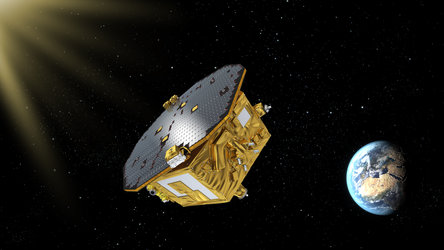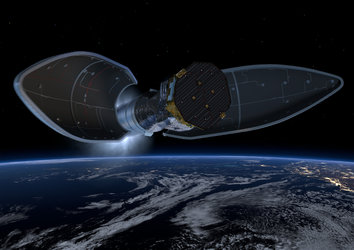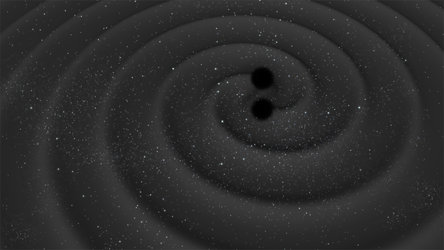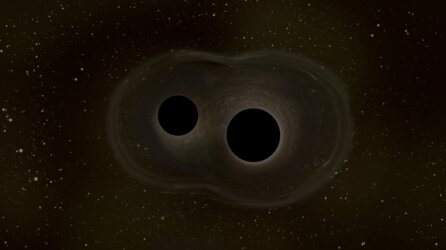LISA mission moves to final design phase
ESA’s Laser Interferometer Space Antenna (LISA) passed an important review that marks the mission as feasible for final technology development and design before adoption.
With LISA, ESA aims to fly the first space-based observatory dedicated to studying gravitational waves – ripples in the fabric of space-time emitted during the most powerful events in the Universe, such as pairs of supermassive black holes colliding and merging.
Mergers of black holes that have millions of times the mass of the Sun, neutron stars falling into the black holes that sit at the center of many galaxies, and events that took place shortly after the Big Bang all produce very low frequency gravitational waves. These waves are so long that they can only be detected using a space observatory that spans millions of kilometres.

LISA will be able to do exactly this with its three spacecraft flying in a triangular formation with 2.5-million kilometre-long sides. Gravitational waves from sources throughout the Universe will produce very tiny oscillations in the arm lengths.
In 2017, LISA was selected as one of ESA’s large class missions in the Cosmic Vision Programme. It has now passed through Phase A in the mission lifetime cycle, where the missions’ feasibility was assessed, as well as where the first designs and technologies were developed.

Phase A ended with a comprehensive ‘Mission Formulation Review’. The review team, consisting of experts from ESA, NASA, the scientific community and industry, identified no showstoppers and confirmed that LISA has successfully reached a maturity sufficient to proceed to the next stage of development.
After passing the review, LISA now enters Phase B1, which is where the mission will be refined, all necessary technology will be developed, final designs will be chosen, and international agreements will be set.
“Transitioning into Phase B1 lifts the mission out of concept studies and marks a major milestone for the involved scientists and engineers,” said ESA’s LISA study manager Martin Gehler. “After a long journey, starting with the first sketches in the 1980s, we now know that we are on track, and that we have a feasible plan forward to adoption.”

During the path towards adoption of the mission – after which the construction phase begins – all crucial components of LISA’s technology are pre-developed by ESA, NASA and the LISA consortium of ESA member states. Examples of these technologies are the laser systems, phasemeters, telescopes, and the gravitational reference sensor.

LISA´s hardware was first successfully tested in space with ESA’s LISA Pathfinder mission. The Pathfinder demonstrated that it’s possible to place and maintain test masses in free-fall to an astonishing level of precision, and that the exquisite measurement devices needed for LISA meets the requirements.
LISA is expected to launch in the mid-2030s, and will work together with ESA’s upcoming Athena mission that will observe the X-ray emission from the clashes of black holes.
“Combining the observing power of two future ESA missions would allow us to study supermassive black hole mergers and their mysterious aftermaths for the first time,” says LISA project scientist Nora Lützgendorf. “First, we will use LISA to detect the gravitational waves and tell us where to look in the sky; then we use Athena to see how the mighty collision affects the gas surrounding the black holes.”
LISA and Athena, together with current and future missions XMM-Newton, Integral, Euclid, Webb and Hubble, will bring ESA to the forefront to shed light on the ‘dark’, energetic and early Universe.















 Germany
Germany
 Austria
Austria
 Belgium
Belgium
 Denmark
Denmark
 Spain
Spain
 Estonia
Estonia
 Finland
Finland
 France
France
 Greece
Greece
 Hungary
Hungary
 Ireland
Ireland
 Italy
Italy
 Luxembourg
Luxembourg
 Norway
Norway
 The Netherlands
The Netherlands
 Poland
Poland
 Portugal
Portugal
 Czechia
Czechia
 Romania
Romania
 United Kingdom
United Kingdom
 Slovenia
Slovenia
 Sweden
Sweden
 Switzerland
Switzerland



































